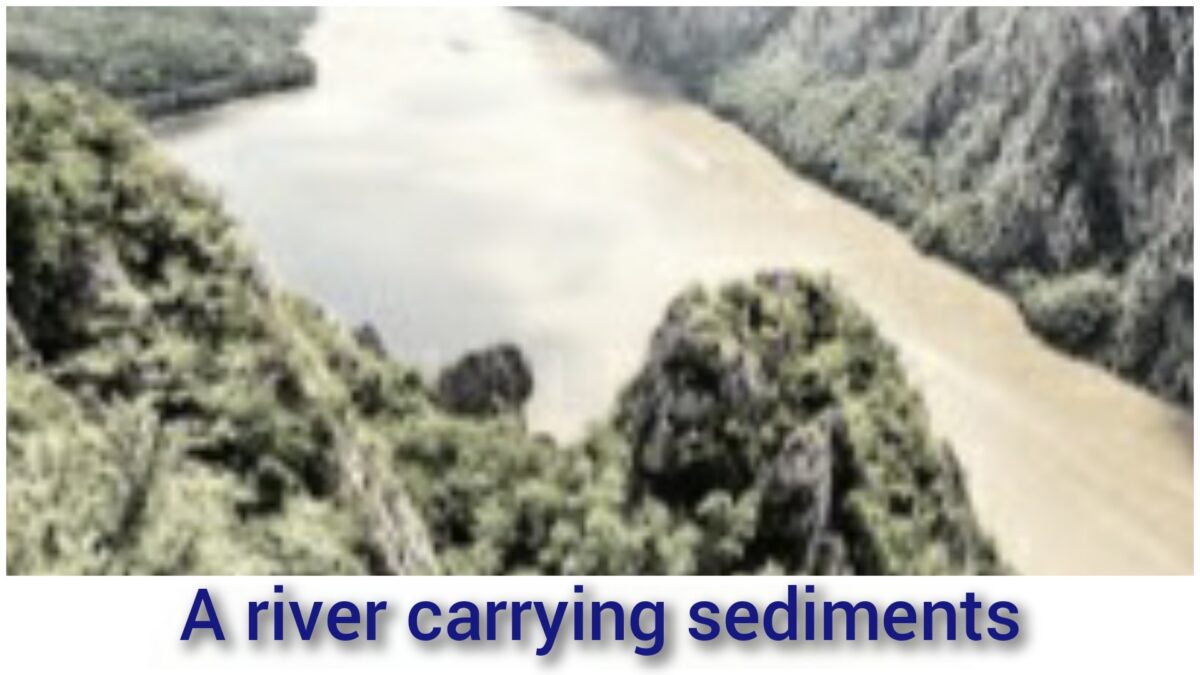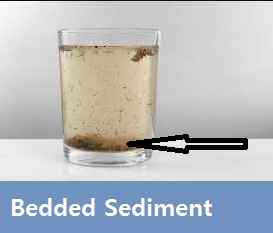Table of Contents
Sediment Definition
Sediment refers to the cluster of organic and inorganic materials that are washed away by water or wind. The size of particles varies from 0.00195 mm to 1.5 mm in diameter.
Explanation
Sediment is a mixture of small soil particles that erode from land through natural processes. Water, especially rainwater, is the primary cause of erosion, as it dislodges sediment and carries it along with stormwater runoff. Sediment can range in size from pea-sized gravel to tiny soil particles, measuring less than 2 millimeters in diameter. It can be found in both natural soil and in some materials used for constructing unpaved roads, driveways, and farm lanes.

Areas such as construction sites, agricultural fields, poorly maintained dirt and gravel roads, and deteriorating stream banks are potential sources of sediment. Raindrops carry enough force to detach soil particles from uncovered soil, and when rain is not absorbed into the ground, it becomes stormwater runoff that picks up sediment as it flows downhill. Initially, the water flows over the land in a shallow layer, a process called sheet flow.
As stormwater continues to flow downhill, it can concentrate, forming small channels called rills, or larger channels called gullies, intensifying the force of the stormwater runoff and dislodging and carrying additional sediment. Ultimately, this sediment-laden stormwater reaches waterways, turning the affected surface water a muddy brown color. Sediment pollution can also originate within a stream channel.
During rainstorms and snowmelt, more water enters streams and rivers than during typical base flows. In the past, when stream levels rose, water would escape into the floodplain where energy was dissipated, and water was absorbed into the ground. However, due to development, there are more hard, impervious, man-made structures like roads and rooftops in both urban and rural areas, causing streams to handle more stormwater than they would in natural settings.
Many stream channels have also been altered – such as being lined with concrete, covered in culverts, or straightened through ditching – to keep them contained. This increased runoff and concentrated flows in modified channels cause stream flows to be deeper and travel faster than they did historically, resulting in streambank or channel erosion that removes stream bed and bank sediment. As bed and bank materials are removed, sediment is washed downstream, lowering the stream bed’s elevation and forming vertical banks that further constrict water flow, intensifying erosion and sedimentation over time.
Sediment can degrade water quality in many ways once it reaches waterways. Small sediment particles may remain suspended in the water column or deposited onto the streambed. Suspended sediments increase water turbidity, causing it to be cloudy, obstructing sunlight, limiting aquatic plant photosynthesis, reducing biologically available oxygen, and increasing water temperature.
Increased turbidity can also make it harder for fish gills to absorb oxygen and make it more difficult for visual predators to forage. Additionally, treating a source of drinking water with high levels of sediment is more expensive than treating clearer, cleaner water. Sediment can also blanket the stream bed, a process called sedimentation. Over time, mud building up on the stream bottom can reduce viable habitat for aquatic insects, fish, amphibians, and other wildlife by clogging the spaces between larger gravel, cobble, and boulders.
Sediment poses a greater water quality risk than soil particles alone because it often carries other pollutants, such as nutrients, heavy metals, organic chemicals, bacteria, and other pathogens. These pollutants originate from sources such as agriculture, industrial waste, mine spoils, and urban contaminants, and can have short-term and long-term effects. Some will dissolve into the water and wash downstream quickly, while others may remain attached to sediment on the bottom of the stream.
What is Suspended Sediment?
When the sediment is floating in the water then it is known as suspended sediment.
What is Bedded Sediment?
When the sediment gets settled at the bottom of the water body then it is known as bedded sediment.

How is Sediment Transported?
When the rate of flow is high, more sediment is transported. Water flow could be strong enough to suspend the soil particles in water since they move downstream or make the sediment settle at the bottom. Sediments usually include organic substances, pollutants, or minerals. Sediment transportation is also known as Sediment load. Sediment load includes all moving particles as suspended load, bedload, and wash load combined.
What is Bedload?
The part of sediment which slides down to the bottom of the waterway is known as bedload.
Sediment is not exactly suspended but it stays in irregular contact with the riverbed. When the flow of water is powerful enough to overcome the weight of soil and the cohesion of the sediment. Around 5-20% of total sediment accounts for bedload.
What is Suspended Load?
The suspended load is the amount of sediment which is carried downstream by the flow of water. Since moving water causes turbulence soil remains suspended. The rate of flow determines the size of the particle which will be carried away.
What is Wash Load?
Wash load comprises the finest particles with a diameter of less than 0.00195mm. The sediment won’t settle if there is a low flow or no flow. It doesn’t settle because the diameter is quite small, and it bounces off the water molecules. Turbidity in water is due to the wash load.
